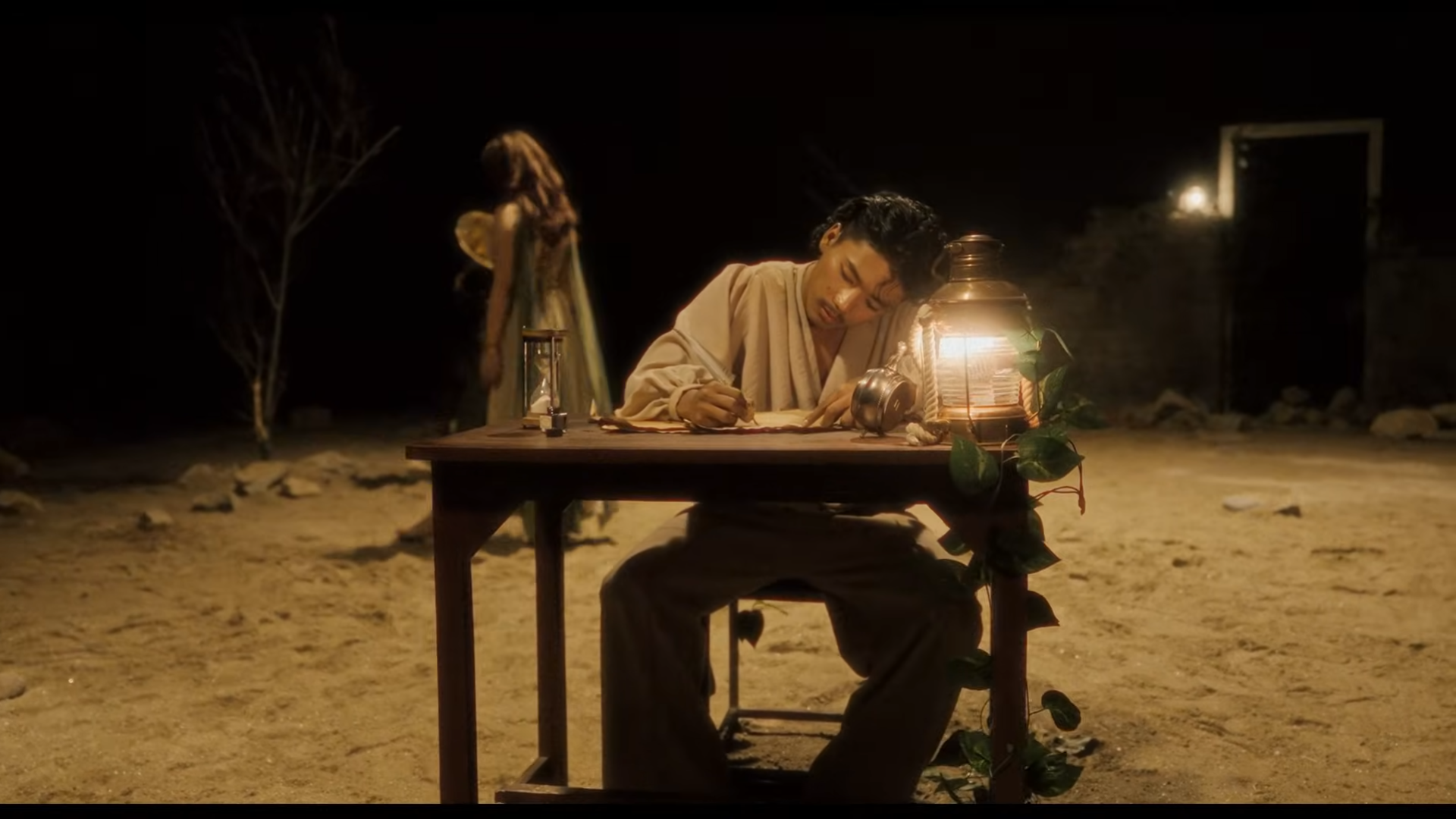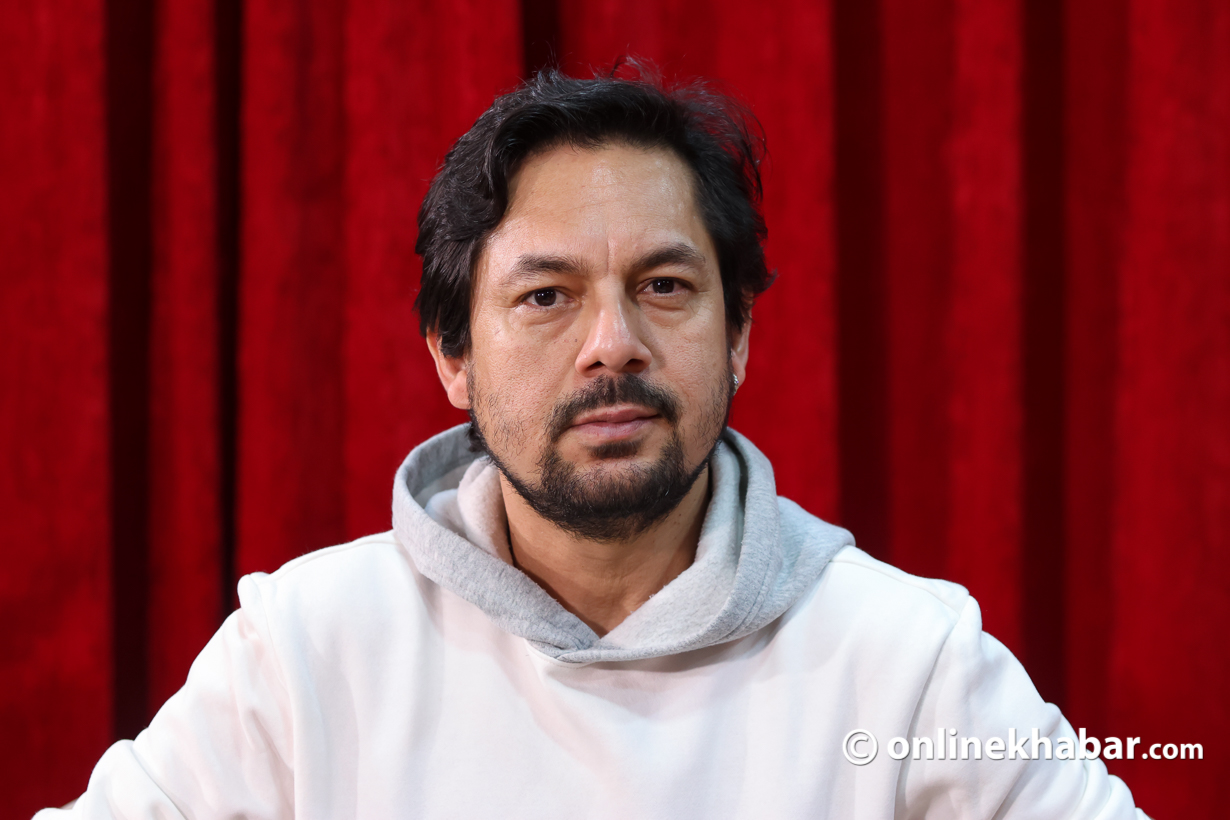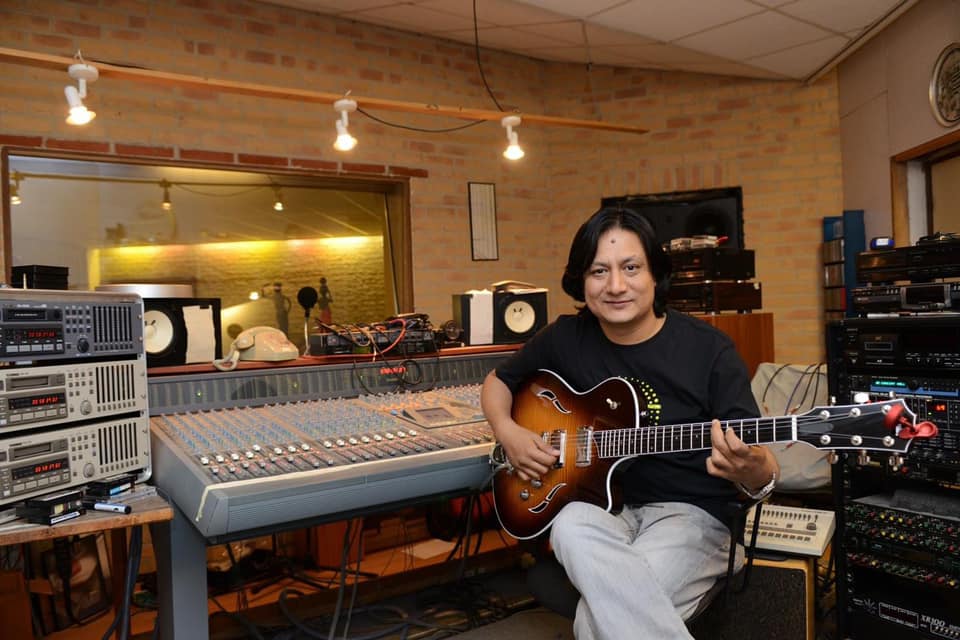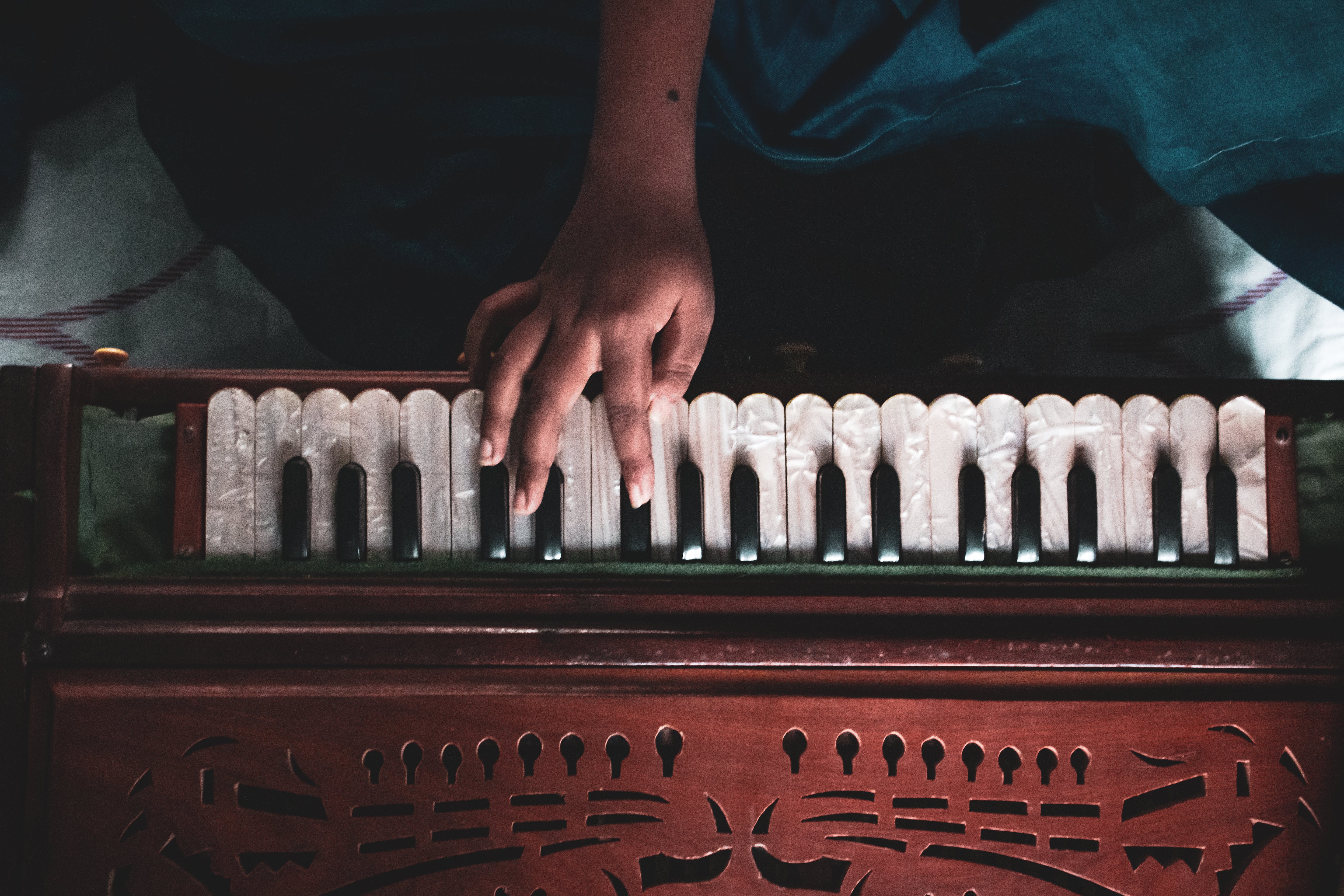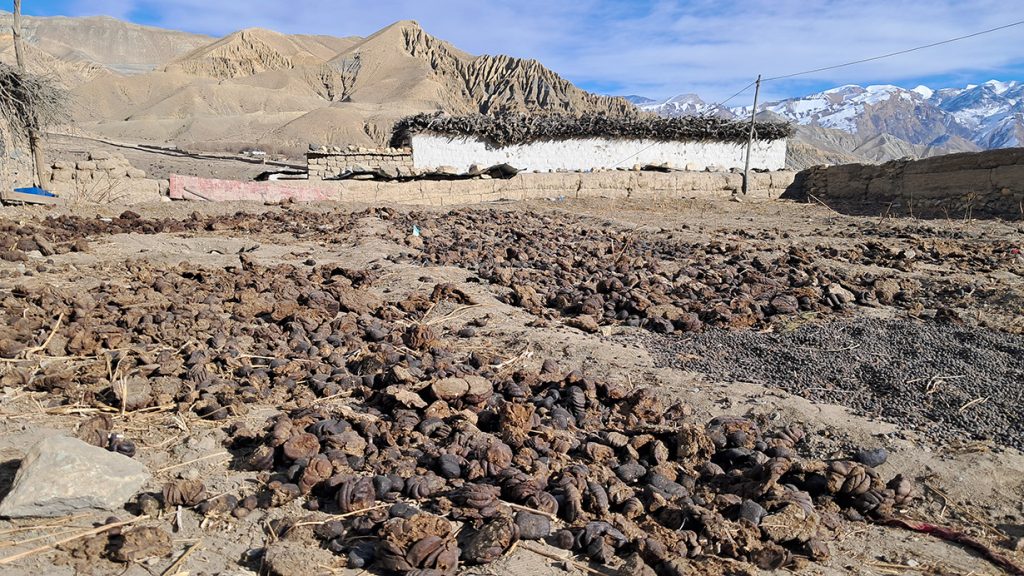
Though people say that music is a universal language, musical instruments being used in various parts of the world have stark differences. From the primordial producer of music–a leaf blade–and the flute made of mammoth ivory or birds’ bones in the German provenance to the electronic music systems of the recent times; we have witnessed a plethora of change in the art of sounds. It is almost every day that some conical piece of wood incurs slight improvisation and completely replaces its former self never to be used again. But not here at Nepali Sanskritik Baja Udyog, where a father-son duo, carrying the legacy of their ancestors in the seventh generation today, has been preserving and producing musical instruments from the scratch.
The Kul family of Saugal Tole in Patan has held a significant position in the cultural history of this ancient city. Besides other contributions, the family has maintained a collection of most antique Nepali bajas. Here, each twist of the wooden shaft of madal, all the rust in the string of sarangi and every discoloured tunnel of narsingha rattle the core of the history of Nepali music. The shop breathes a life of its own–untouched by the outside world and its musical revolution. Today here, you can find Hari Lal Kul and his son Ashish sculpting an archaic jhyali or molding a round foundation for dholaks.
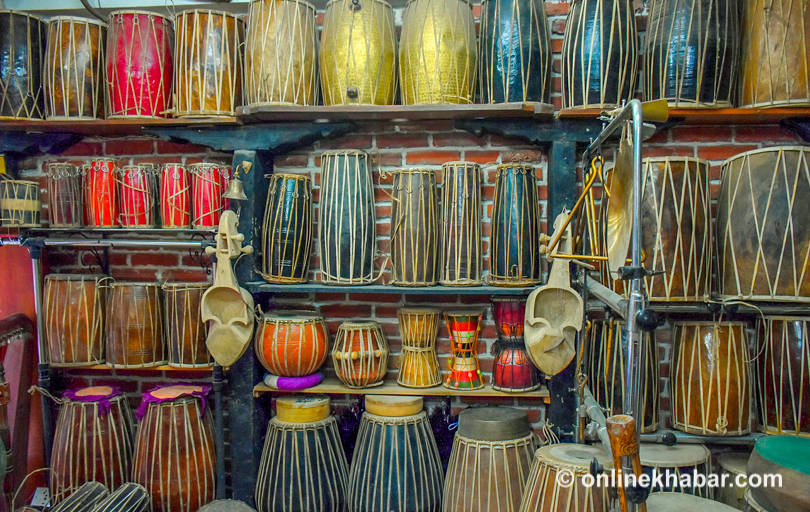
But, it is not as if they are completely shunning the modern instruments for the Udyog also produces, sells and hires drums and guitars. Nonetheless, the family prefers to call it a ‘museum of musical instruments’ rather than a ‘shop’. And it is well justified by a glass box allocated at the corner which boasts an unparalleled array of authentic Nepali instruments dating back to the 60s and beyond. It is called the ‘sovereign’ box which never fails to awe the watcher as it reflects the glorious past of Nepali music scene that soothed the melancholic soul and fortified the joy of the pompous recession. Looking at the box, we find ourselves immensely revising the times when a bigul echoed the kingdom prior to conveying the message sent by the ruler and a sankha cautioned the people from any danger or notified the death of someone in the village.
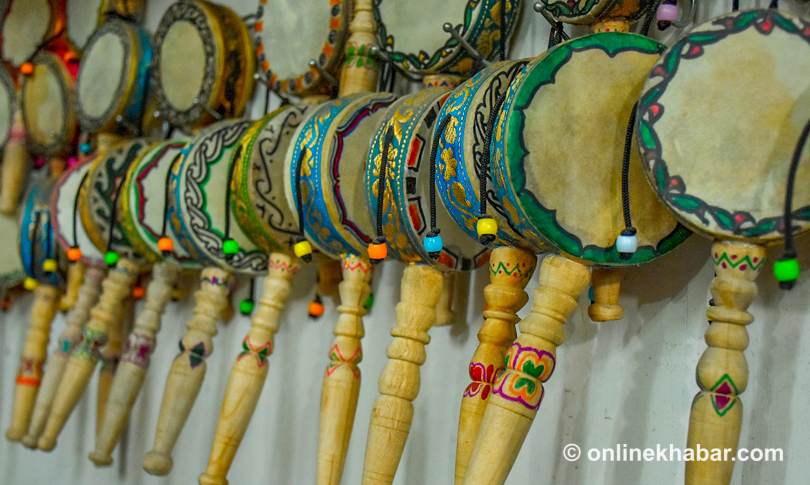
Talking about the raw materials, the wood for these instruments is brought from their villages and as for the instruments that required animal skins for their membranous covering, skins of oxen and camels are imported from India. These materials are compiled and just behind the counter stands a long table above which are aligned chisels and pliers, the weapons of these makers of music.
Ahish Kul says that the business is run by the entire family, fostering and preserving the Nepali essence.

Here, one can find instruments that have already been obliterated from the history like this particular one called Phukne. One also finds a new, reinvented instrument by Hari Lal Kul himself, called the Chhal with appealing Madhubani painted façade which also happens to be the most selling instrument. There is also a weird-looking hollow box with a spring going haywire called as a ‘thunder-drum’, used in theatres to create the sound of howling wind and thunderstorm. Other than these, we also get to see the infamous gramophone perched atop a bunch of wooden instruments. And just across the gramophone are the vinyl records of the iconic bands like The Beatles.
The museum-cum-shop is a delightful sight to see, enveloping evidences of evolution of music in Nepal with over 85 types of instruments and four hands that invariably produce and protect one of the most important assets of Nepali heritage.





